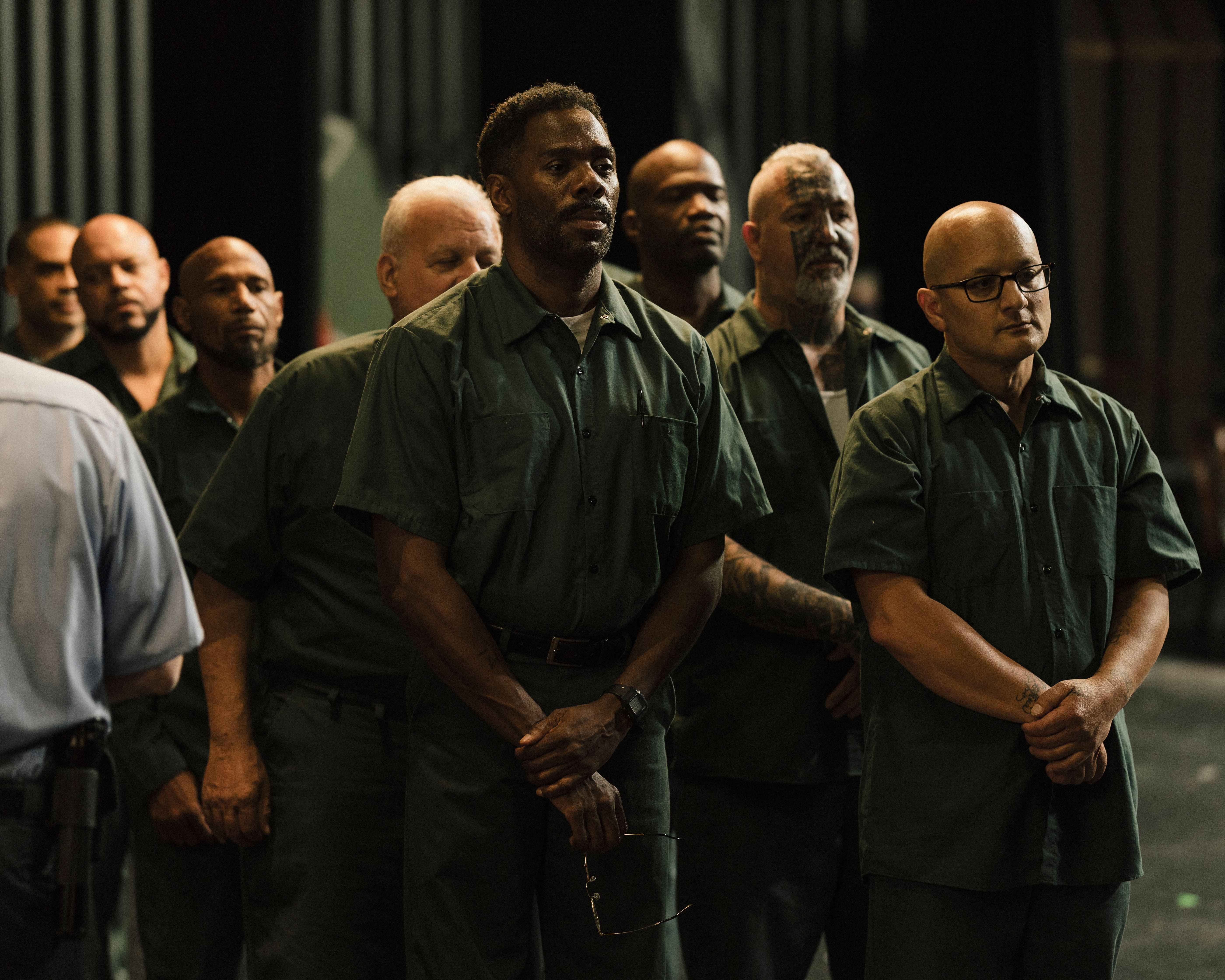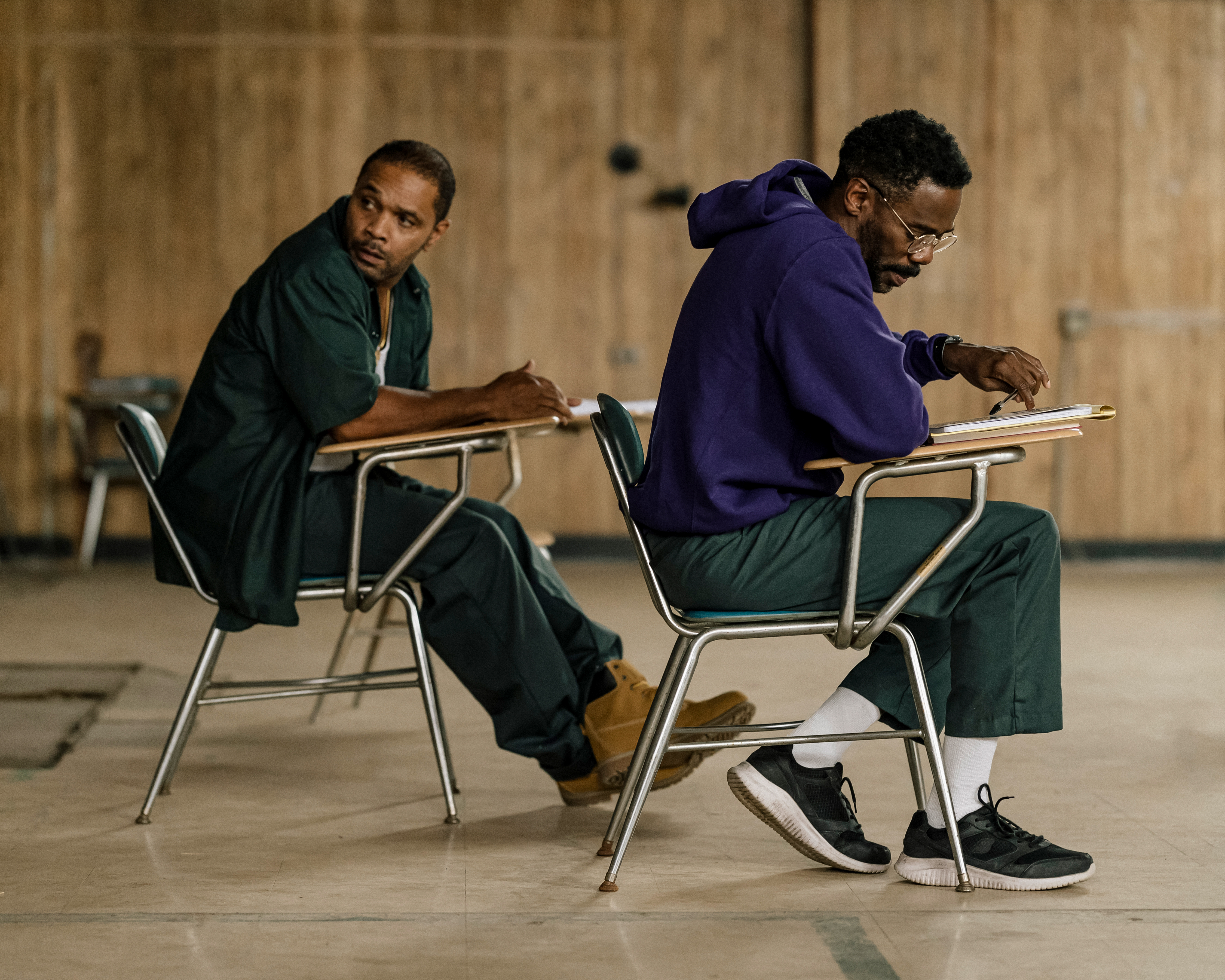
As a movie lover with a deep appreciation for stories that bring empathy and humanity to the forefront, “Sing Sing” is a rare gem. Having had the privilege of watching this film, I can’t help but be in awe of its unique creation process and the genuine connection it forms between the audience and its characters.
As a movie enthusiast, I can tell you that finding a film like “Sing Sing” is a real treasure. It’s a cinematic masterpiece with a unique ability to connect deeply with our emotions, crafted with care and genuine humanity. Each frame seems to have been carefully shaped by the filmmakers’ hearts, and every detail attests to their unwavering dedication to the creative process.
The fascinating backstory of how “Sing Sing” was created is nearly as intriguing as the film itself. This captivating production is the culmination of years of dedication from writer-director Greg Kwedar and co-writer Clint Bentley to Rehabilitation Through the Arts (RTA), a theater program at Sing Sing Correctional Facility. Initially, they attempted to produce a narrative film about RTA using professional actors. However, they failed to replicate the enchanting atmosphere they encountered observing the prisoners. Instead, they opted to bring the unique energy of the room to life on screen. They assembled a cast consisting of RTA graduates and featured stars Colman Domingo and Paul Raci.
In “Sing Sing,” the actors portraying secondary roles convincingly embody their characters, delivering impressive performances. Domingo assumes the part of John “Divine G” Whitfield, an inmate at Sing Sing turned playwright and actor via RTA. Raci brilliantly takes on Brent Buell, RTA teacher with his distinctive irascible charm from “Sound of Metal.” Moreover, one of Domingo’s longtime co-stars, Sean San Jose, delivers a standout performance as Mike Mike, Divine G’s loyal friend. However, the most captivating newcomer in “Sing Sing” is Clarence “Divine Eye” Maclin, who authentically portrays himself as a man shaped by his past and present, discovering compassion and gentleness on the stage.
The story unfolds as RTA produces its inaugural original play, an intricately woven time-travel comedy filled with humor that jumps from ancient Egypt to gladiatorial arenas to the Wild West, complete with a surprise appearance by Freddy Krueger (originally depicted in Buell’s “Breakin’ the Mummy’s Code,” as detailed in a 2005 Esquire article by John H. Richardson). However, this production is not just about these men bringing a show to life. It delves into the emotions and experiences within these prison walls – the hopes, heartaches, personal growth, and victories that these men undergo as they perform together onstage. This poignant reminder underscores the essence of living even when behind bars.
Kwedar shows great patience in his filmmaking, evident in its form and narrative. Cinematographer Pat Scola captures this on 16 mm film stock, which calls for the same level of care and consideration as the tale itself. The visuals boast a lush, warm hue, with earthy tones of gold and green representing both natural and institutional settings.
“In ‘Sing Sing,’ the film uses deliberate close-ups to ground viewers in the characters’ environments and highlight their connections, while simultaneously keeping us aware of their locations, even during moments of emotional release. In the theater room, where men engage in conversations or improv activities, the camerawork is unobtrusive and face-to-face, creating an immersive experience for the viewers.”

Kwedar and Bentley’s screenplay skillfully weaves in the characters’ past experiences during their conversations. They avoid the usual melodrama and violence found in most prison films. Instead, they portray the harsh realities of prison life in a subtle and authentic way. There is sorrow, despair, and setbacks, but the story does not sensationalize these elements. It presents an honest depiction of incarcerated existence, where loved ones are lost, obstacles appear insurmountable, yet determination leads to small victories and unexpected joys.
As a passionate fan of this deeply moving portrayal, I can’t help but be struck by how “Sing Sing” powerfully asserts the inherent humanity within an inhuman system. In this institution where each day brings new indignities and reminders that my time and freedom are not truly mine, RTA becomes a beacon of hope. Despite the intrusive room searches, degrading verbal abuse, and intimidating parole hearings that shape my reality, this story reminds me of the resilience and dignity that lies within us all.
In more straightforward terms, Domingo from “Rustin,” “The Color Purple,” and “Zola” stands out for his ability to portray quiet, dignified, and heartbreakingly hopeful characters better than most actors. He brings depth and emotion as the central figure in “Sing Sing,” yet allows other cast members to shine during their significant moments. San Jose delivers a heart-wrenching monologue, but Maclin leaves a lasting impression with his authentic portrayal of a tough man who gradually softens and lets love in.
If Kwedar seems unsure how to wrap up the movie with a clear ending, resulting in excess denouements, this is a pardonable mistake. The film becomes an elusive yet captivating instance of grace that you’ll be hesitant to depart from.
Katie Walsh is a Tribune News Service film critic.
Read More
- Mobile Legends: Bang Bang (MLBB) Sora Guide: Best Build, Emblem and Gameplay Tips
- Brawl Stars December 2025 Brawl Talk: Two New Brawlers, Buffie, Vault, New Skins, Game Modes, and more
- Clash Royale Best Boss Bandit Champion decks
- Best Hero Card Decks in Clash Royale
- Call of Duty Mobile: DMZ Recon Guide: Overview, How to Play, Progression, and more
- Clash Royale December 2025: Events, Challenges, Tournaments, and Rewards
- Best Arena 9 Decks in Clast Royale
- Clash Royale Best Arena 14 Decks
- Clash Royale Witch Evolution best decks guide
- Brawl Stars December 2025 Brawl Talk: Two New Brawlers, Buffie, Vault, New Skins, Game Modes, and more
2024-07-18 18:13